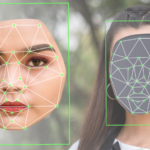Cultural appropriation of taonga Māori online is continually increasing despite the backlash on social media and in the media (mainstream and Māori). Just recently one art shop in Nelson who continued to offer offensive culturally appropriated art, despite apologising to the local Iwi, was forced to shut down.
This post provides a number of suggestions to protect Māori images and images of yourself online.
If you own an image that is used for branding purposes, you may need to consider registering it as a TradeMark for legal protection and enforcement reasons.
Ideally, Māori and Indigenous People would have a large social group on platforms such as Facebook that can be alerted to do mass reporting and comments on any racist and cultural appropriation posts and images. But in the meantime; If your image or an image of your tipuna, marae etc is being used online or in social media without permission or inappropriately, you can do the following:
Tips when your knowledge has been taken
- Contact the person or company and politely explain the situation. Most times this is enough for the offending to cease. Company details such as directors are publicly viewable for New Zealand companies (Companies Office) as are registration details of people with a .nz web address (DNC).
- Use and modify this ‘Cease and Desist‘ “to remove” and warn the offender that their usage of your image is illegal.
- Keep a written record of all communications and ensure you have the proof that you own the image and when and how you created it.
- While Indigenous knowledge has no legal protections, we can use the available tools freely available to us all .On social media such as Facebook, use the report feature and encourage all of your friends and whānau to also do the same. Promote people to boycott the business.
- Depending on the scenario, it may be of media interest. Try to contact a reporter directly to discuss the case. There would be a number of factors involved and not all stories make it to either Māori media or mainstream New Zealand media.
- Scoop is an independent news outlet that is monitored by various media. Depending on the issue, you could consider writing a media release and submitting it to Scoop.
- If the offender is a New Zealand individual or organisation you could consider the Disputes Tribunal. But you should read what you can and can’t take there. You may be able to seek unpaid fees for the usage of your work?
- If the offender is a New Zealand individual or organisation based domain name, you could consider disputing the web site with the Domain Name Commissioner Disputes Process.
- If all else fails, you will need to consider hiring a lawyer or Patent Attorney. There is no legal aid for these circumstances and costs could be around $220.00 plus GST per hour. It is worth while to shop around.
- If you need to use or add a photo on social media such as Facebook or Twitter etc, add a watermark stating “Copyright” with your name and year or similar and “Do not copy without Permission” or similar.
- Do not use high quality images that can be easily copied and reduplicated.
- If using images of Tipuna, add a text image at the bottom stating something similar to “ Sensitive Image, Do not redistribute, May offend”. Also depending on the image, a watermark may be appropriate.
- If you add a photo of yourself to the Internet and or social media such as Facebook and you have a Tā Moko or Moko kauae that you do not want others to use, you may want to consider physically distracting or digitally distorting the image of your moko. But this is a very sensitive and personal/whānau decision.
- If someone else is taking a photo of you, ensure you have a written agreement from them that you as the person in the photo is the copyright owner of the image.
- Do not allow strangers to take your photo. It is too common for tourists to want a photo of someone and then to claim ownership of the image and to use it in ways that may be inappropriate to Māori.
- If you have video, add a Copyright note watermark over the video.
- Audio; if a free download, maybe add breaks that state you are copyright owner and do not redistribute without permission. Also add a Terms of Agreement to any download stating that it may not be redistributed or modified without your permission.
- At marae and urupa, add sign “not to not take photos.
- Add copyright notices and notifications to videos you create.
- Where possible, include the whakapapa of the image or idea.
Various types of licences you could consider using?
Sometimes you may want to share your image or idea, but may want credit or the whakapapa of the image or idea to be shared. There are a number of different licences that can be used. A list of some of them follow.
Disclaimer: I am not a lawyer and if in doubt you should contact a lawyer. I am a cultural appropriation and Traditional Knowledge practitioner/advisor.





Leave a Reply